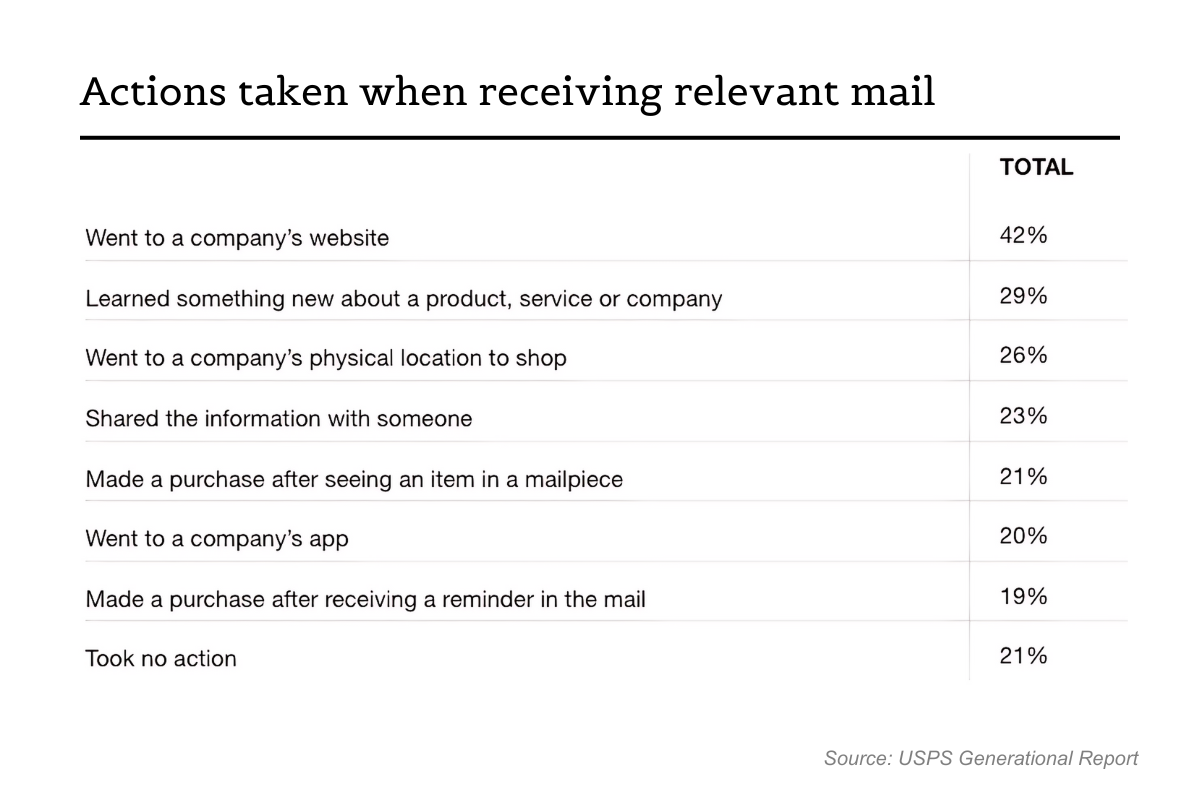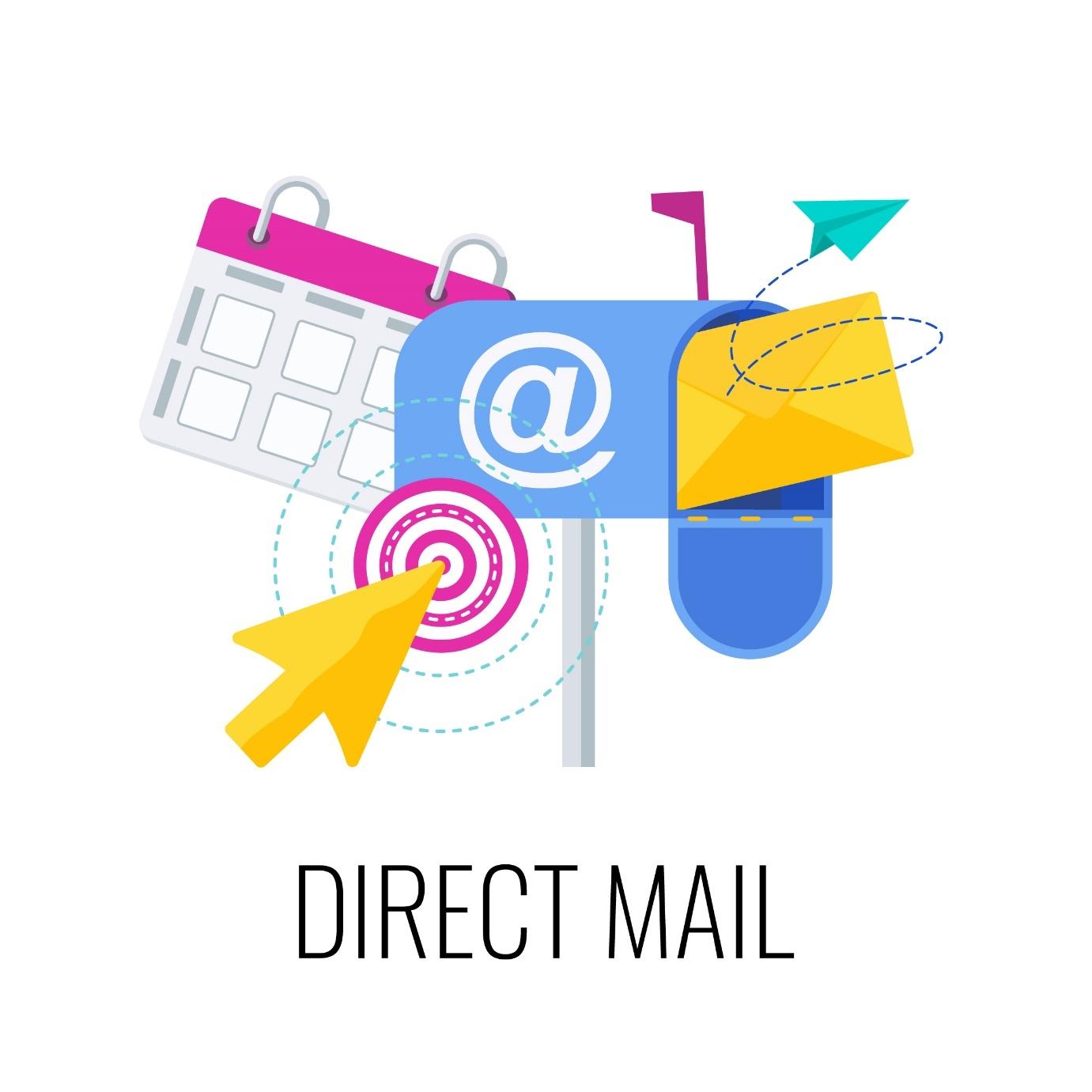
A Guide to Dynamic Direct Mail Marketing
How does a 90% engagement rate sound?
When it feels like the rest of the world has gone digital, the humble direct mail marketing campaign continues to be an effective, trustworthy way to engage with your target audience. In fact, direct mail continues to be one of the top sources for smart purchasing decisions for consumers.
What is Direct Mail Marketing?
Direct mail marketing involves sending promotional materials, like postcards, brochures, and catalogs, directly to your target audience via their mailbox. While not a revolutionary form of marketing, data and segmentation gives you the power to deliver personalized, tailored messages to the right people at the right time.
Advantages of Direct Mail Marketing
Your direct mail marketing campaign has the capacity to reach people in a way that digital formats cannot. Instead of competing with flooded inboxes and click-bait schemes, you can send a personalized message right to their door. Why else should you choose a direct mail campaign?
-
Target Reach: You can precisely target different demographics, geographical areas, or customer segments to reach the most relevant audience.
-
Tangible Engagement: A physical, tactile experience in marketing still has power. It can leave a lasting impression and boost brand awareness.
-
Personalization: Direct mail allows you to personalize your message to individual recipients, enhancing relevance and response rates.
-
Measurable Results: Monitor response rates, conversions, and ROI with tracking tools and unique identifiers like promotional codes.
-
Creative Flexibility: Direct mail allows for a wide range of creative formats, from postcards and brochures to catalogs and samples.
-
High Impact: Professionally designed and printed direct mailers can stand out, capture attention, and drive action.

But Do Consumers Like Direct Mail Marketing?
Contrary to what you might think, direct mail results are overwhelmingly positive. The key is the personalization and relevance of the message. USPS reports that 56% of consumers of all generations have made a purchase based on the mail they received. Even the ever-digital Gen Z loves getting excited about the mail.

How to Make Your Direct Mailer Stand Out
To create a successful direct mail campaign, start by crafting a compelling headline that will easily catch the readers’ attention. Depending on your format, you may be limited in space—all the more reason to make sure that your copywriting is concise and persuasive. Highlight the main points of your message with bullet points or specific callouts. Most importantly, stick to one powerful call to action.

Impact of Design and Quality
When it comes to design, using a high-quality print shop to design and print your direct mailers ensures that your company looks and feels professional in the hands of your customers. You want to have your brand represented distinctively among other mailers. Choose bright, bold visuals that speak to your audience and brand identity. We always recommend a high-contrast and readable font for easy reading and high visibility.
Combining Print and Digital Marketing
QR codes are a quick and easy way to combine print and digital marketing efforts. A QR code on your direct mailer that takes customers to a landing page can be a great way to gauge responsiveness and conversions.
Targeting and Segmentation
Take your direct mailing campaigns from generic and forgettable to surprising and engaging. Customization is one most valuable parts of direct mail marketing. Put data to work as you curate a personalized experience for your targeted audience.
What is VDP?
Variable data printing (VDP) gives you the ability to customize printed materials by swapping out variable fields like text, images, and graphics. Each printed piece can be catered to specific preferences.
What does that look like in practice? Check out this example:
A local bakery launches a direct mail campaign to attract customers to a new location. They use third-party data to learn about the demographics of nearby neighborhoods. Families with young kids receive a flier showcasing the bakery’s kid-friendly treats, and young professionals receive a flier with on-the-go lunch options. Both groups are excited to get relevant information that applies to their lifestyle delivered to their mailbox.
The data that drives these direct mail campaigns can come from a few different sources:
By leveraging data from any of these sources, you can create highly targeted direct mail campaigns that resonate with specific demographics, increase response rates, and drive business growth. When handling customer data and information, it is important to make sure that you are following proper rules and regulations before using it for marketing purposes.
Ways to Segment Your Data
Demographics: Divide your audience based on age, gender, income level, occupation, and/or marital status. This basic form of segmentation allows you to create messages that appeal to specific groups at different stages of life.
Psychographics: Dig a little deeper into the psychographic profiles of your audience. This looks like evaluating lifestyle, values, attitude, and personality traits. This will help you write messages that speak to aspirations, beliefs, and desires.
Behavioral: Your audience’s past behaviors with your brand can help uncover the best way to reach them through marketing. You can identify patterns and preferences to tailor your message to each segment’s interests and needs.
Maximizing ROI and Measuring Success
Now, we know that data can help craft a successful direct mail campaign, but what data helps you determine the success of your efforts? Depending on the specific outcome you want to achieve with your campaign, success might look different. New clients and increased revenue are always great, but these are the numbers that can help you understand your direct mail campaign’s performance.
-
Response rates: Whether it was website site visits or phone calls, response rates measure the level of engagement and interest generated by the campaign. Factors that might affect the response rate include the quality of the offer, the relevance of the message, and the effectiveness of your CTA.
-
Conversion rate: A step beyond response rates is conversion rates. These are the customers who completed a desired action like making a purchase or scheduling a service. This will measure your campaign’s ability to drive meaningful results that directly affect your business goals.
-
Customer lifetime value: This represents the total revenue generated from a customer over their entire relationship with a business. Your campaign may focus on customer retention, repeat purchases, and increased average order value. Use data to identify high-value customers and focus on keeping them engaged.
Optimizing Your Direct Mail Campaign
Get the most out of your direct mail campaign by using A/B testing, evaluating the results, and getting customer feedback. By tailoring your campaign to match customer needs and demographics, you’ll maximize your return and meet your goals.
Be proud of your next direct mail campaign! AlphaGraphics Las Vegas can help you not only identify your target market, but also build a database of customers and prospects, select the message form best suited for your audience, and produce and send your materials. We’ll even help you track your marketing campaign results.
Connect with our digital marketing team to get started.
Sources:
-
USPS Generational Report, https://www.uspsdelivers.com/2020-2021-generational-research-report/